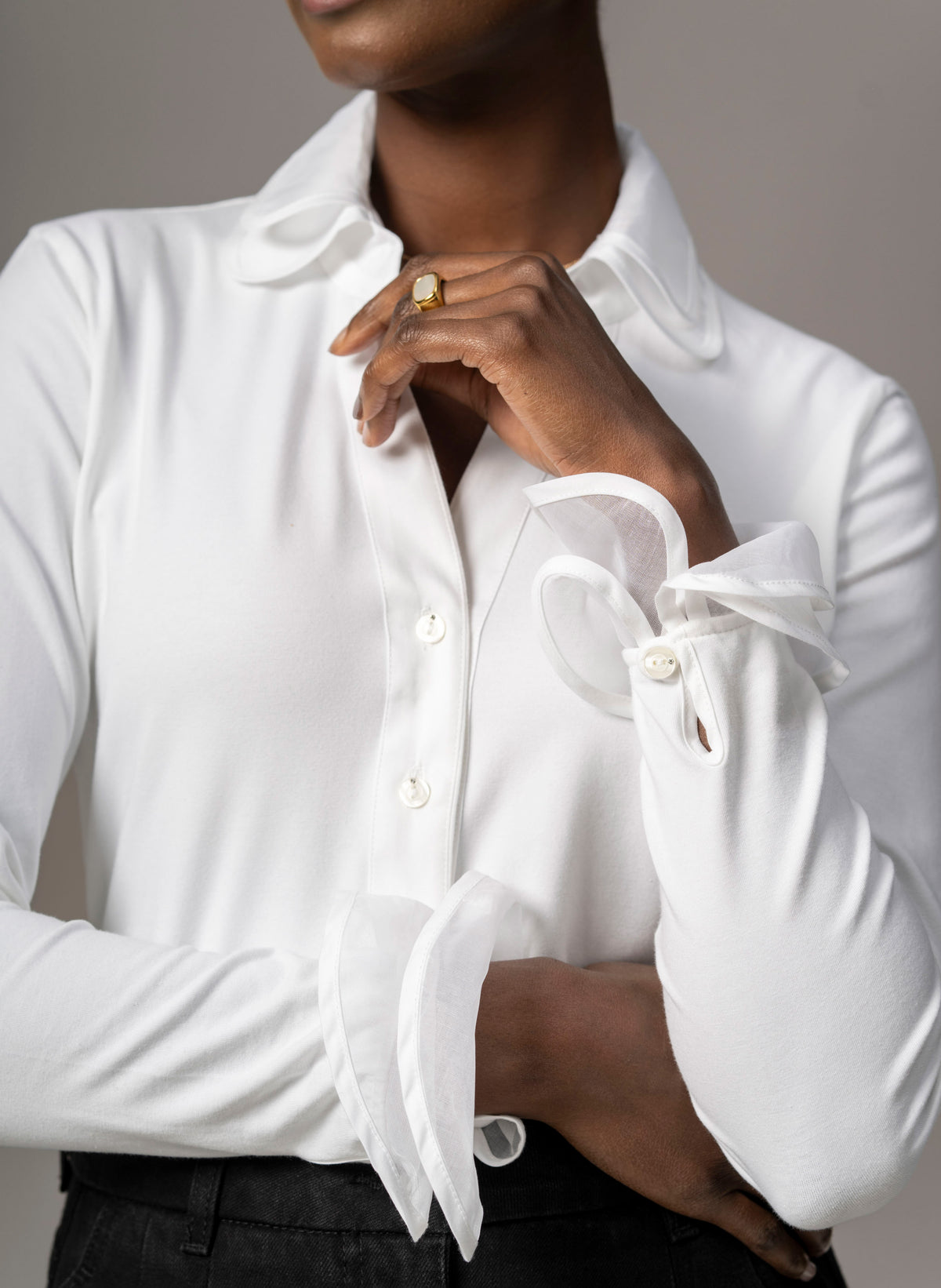The Unspoken Symbolism of the White Shirt Speaks Volumes

We tightroped the white thread of time from Ancient Egyptian underwear through to Louise Brooks in the last blog. Now we follow the symbolism of the white shirt unfolding in cinema, art and photography.
By the silent movies and early talkies of the 20s and 30s, the archetype of the white shirt had collected a cacophony of symbolic associations which helped to make it such an intriguing and versatile garment.
An androgynous undertone was set from the very beginning as ancient Egyptian and Roman underwear, while, along the way, associations with rebellion, bohemian artistry and hard, non-manual work snuck into the fabric of the shirt.
As photography and cinema exploded with the advance of technology, carefully constructed images helped to expand and entrench the symbolism of the white shirt.

Image credit: Another Man Mag
Cecil Beaton, one of the Bright Young Things and himself a pioneer in exploring identity through photography, boldly utilised the white shirt as a symbol of androgyny and rebellion in the 1925 self portrait above.
Although the white shirt is a conventional wardrobe staple by this point, it’s the versatility of how it can be worn which allows it to subvert. In Beaton’s own words:
“Be daring, be different, be impractical, be anything that will assert integrity of purpose and imaginative vision against the play-it-safers, the creatures of the commonplace, the slaves of the ordinary.”
The sentiment above is worldlessy, symbolically illustrated through the above image of the white shirt alone.
The white shirt as a blank canvas to bounce ideas and concepts off of deepens its symbolic meaning through art. In ‘Me and My Parrots’ by Frida Kahlo (1941), the shirt is an archetype which spans both tradition and unconventionality.
Image credit: Fridakahlo.org
Although the garment depicted in the painting is part of traditional Tehuana dress, Kahlo utilises a strength of gaze which is direct, arresting and more stereotypically ‘masculine.’ This play between male–female relations is particularly apparent in the photograph above featuring Frida’s lover Nikolas Muray in a more coy, traditionally feminine pose. The sense of seduction here is subdued, but undeniable. Once more, the white shirt is both free spirited and bohemian as well as rigid and proper.
Patti Smith continues the evolution of the white shirt archetype over time in the publicity images for her 1975 album ‘Horses.’ The unbuttoned collar is a nod to the intimacy of the origins of the white shirt as an undergarment which is titillating and seductive without showing much skin. A refreshing version of female sexuality after the shrinking hemlines of the ‘60s and plunging necklines of the ‘70s.
The literary and artistic trappings of the white shirt which were discussed in the previous article are also evoked creating an image of a woman who is both a serious artist and sexual in her own right.

Image credit: Photo by Robert Mapplethorpe from Classical Album Sunday’s
The white shirt has been a huge queer role model for many years, as demonstrated by Beaton, but it really took off as a mainstream unisex item of clothing in the mid ‘70s. With this pervasive queerness comes a sense of being unburdened with conventionality. It is both sensible office wear and the uniform of the rebel.
In a heteronormative society, queerness threatens the status quo, so it’s perhaps not surprising that the white shirt has a certain sense of feminine mystique and danger.
Is there another garment which could be better suited to Pulp Fiction’s Mia Wallace? There’s a reason a white shirt has become part of one the most emblematic cinematic images of all time. 
Image credit: Movieclips
The symbolism in the white shirt is enduring, but it hasn’t stopped evolving yet. Embodying a multitude of seemingly contradictory meanings and concepts with points of meaning scattered through time and culture, the archetype of the white shirt has a richness which will shapeshift and stay relevant for another thousand years.
¸
In the words of the Temporary Fashion Museum:
“The power of the white shirt is as strong as it is evocative – through it we claim authority over the discursive meaning of our own bodies.”











